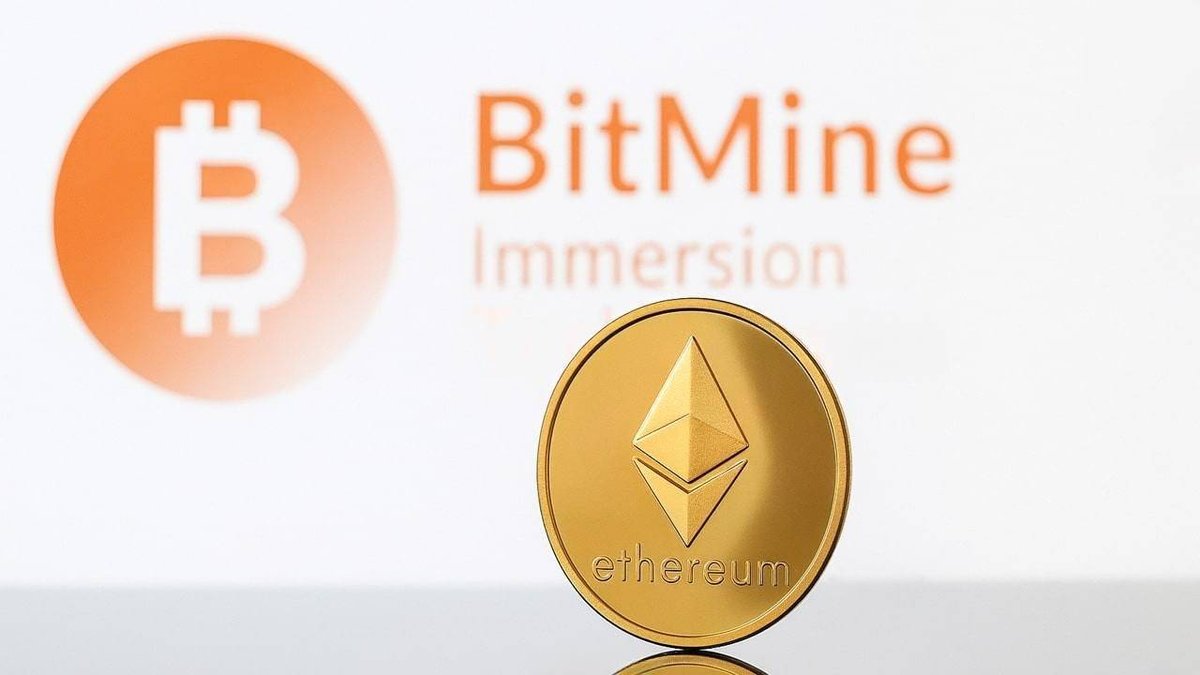Q3 2025 disclosures point to aggressive ETH hoarding by corporates and treasuries, led by BitMine Immersion, with SharpLink and The Ether Machine adding fuel. With a large share of supply effectively off-market via staking, ETFs, and balance sheets, the path to a sharp repricing is clearer—though not guaranteed
While retail timelines stayed quiet, corporate treasuries were anything but. Across Q3 2025, public-company disclosures and capital raises showed a step-change in institutional ETH accumulation, with multiple buyers scaling positions and signaling long-duration intent. In parallel, staking and spot products absorbed additional supply, leaving a thinner tradable float. In markets, who holds matters as much as how much exists; the more coins migrate to holders who don’t trade every dip, the more impact each marginal bid can have on price.
The Quiet Landgrab: Who’s Buying
- BitMine Immersion emerged as the largest single corporate holder, publicly outlining an ETH-centric treasury strategy and steadily adding through Q3.
- SharpLink raised fresh capital with language tying proceeds to ETH accumulation alongside growth initiatives—an explicit treasury posture rather than a casual punt.
- The Ether Machine attracted large in-kind commitments and positioned itself as a pure-play Ethereum treasury and staking vehicle with a public-markets roadmap.
Taken together, these moves shift the ownership base toward stickier hands—treasuries, funds, and vehicles that typically manage exposure in quarters and years, not days and hours.
Why Supply Is Tightening
- Staking vacuum: A hefty share of circulating ETH is staked, creating an exit-queue friction that slows re-entry to spot markets. Staking also turns passive ownership into a carry trade, reducing the impulse to sell during chop.
- ETFs & listed treasuries: Spot products and public vehicles absorb coins without recycling them back to exchanges, tightening observable float.
- Corporate balance sheets: Programmatic treasury accumulation moves ETH from order books to wallets that rebalance infrequently, compressing available supply at the margin.
Layer these vacuums together and you get a regime where supply elasticity falls just as institutional rails make it easier for fresh demand to arrive.
The $10K–$12K Debate: What Needs to Happen
Bullish strategists argue that a compressed float plus improving institutional access creates a plausible path toward five figures. For that path to materialize, three ingredients typically show up together:
- Persistent net creations in spot ETH products and a lack of large redemptions, signaling stickier inflows.
- Healthy, not euphoric, leverage: funding near flat or modestly positive, with futures open interest rebuilding without crowding—so rallies aren’t only liquidation-driven.
- Macro that doesn’t fight you: policy clarity around digital assets and no outsized shocks that force broad de-risking across high-beta exposures.
Microstructure Check: How a Tight Float Trades
When supply is locked in staking, ETFs, and treasuries, price discovery becomes jumpier. Dips can be shallow if resting supply is scarce; they can also be sharp if leverage overbuilds and thin books gap lower. Watch the mix of spot vs. perps, the balance between exchange balances and off-exchange holdings, and stablecoin net issuance as early tells for trend strength.
Risks That Can Still Break the Thesis
- Policy and macro whiplash: Trade war headlines, a growth scare, or a disorderly rates move can flip risk premia higher and drain crypto liquidity, regardless of supply dynamics.
- Concentration and reflexivity: If one or two large treasuries hedge or trim, the signaling effect may overshoot the fundamentals and trigger outsized moves.
- Staking exit waves: Yields falling, pricing stalling, or rule changes could enlarge exit queues and re-inject supply after a lag.
How to Track the Next Leg (Not Investment Advice)
- ETF creations/redemptions: A steady creation cadence is the cleanest confirmation of institutional demand.
- Exchange reserves: Declining ETH balances on major venues alongside rising long-horizon holdings points to sustained float compression.
- Funding/basis: Mildly positive funding and a resilient cash-and-carry basis suggest organic spot demand rather than unstable squeeze dynamics.
- Staking ratio and exit queues: Rising staking with stable or shrinking exit lines supports a durable carry bid.
- Treasury disclosures: 8-Ks, press releases, and raise documents that explicitly cite ETH purchases keep the accumulation narrative—and the squeeze—intact.
Bottom Line
The Q3 tape wasn’t just noise—it marked a transfer of Ethereum into longer-duration hands. As staking, spot products, and corporate treasuries continue to absorb supply, the tradable float shrinks and the market grows more sensitive to demand pulses. That doesn’t guarantee a straight line to $10K–$12K, but it explains why the path exists: the more ETH migrates from traders to holders, the more every incremental bid matters.







